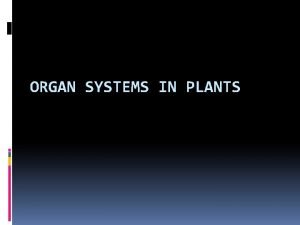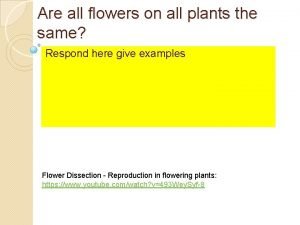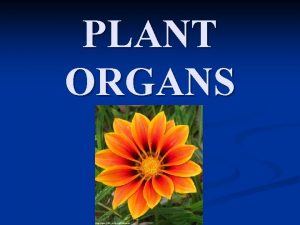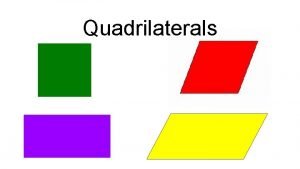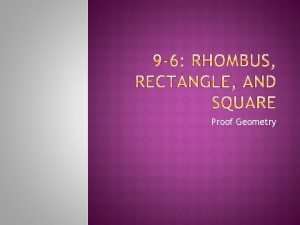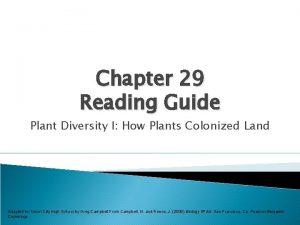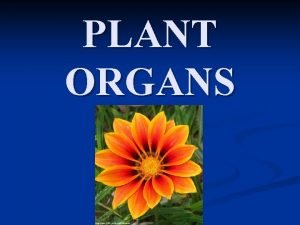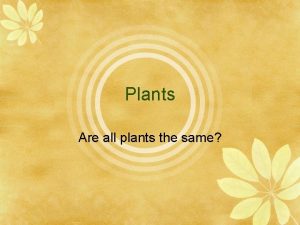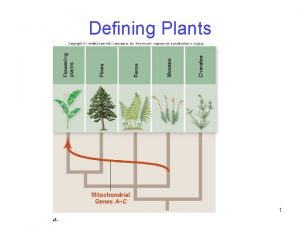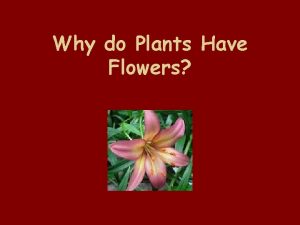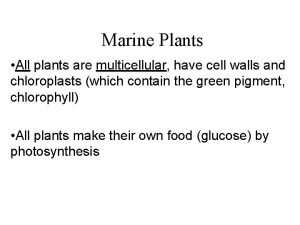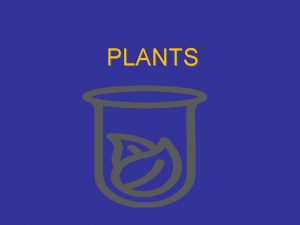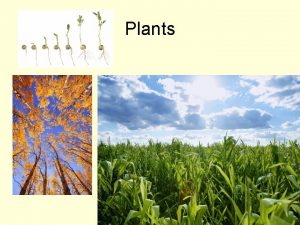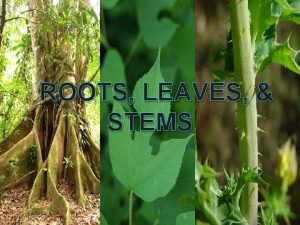All plants have these four organs 1 2
















- Slides: 16

All plants have these four organs 1. 2. 3. 4. Roots Stems Leaves Reproductive Structures

Major Groups of Plants 1. 2. 3. 4. Mosses Ferns and Allies Gymnosperms Angiosperms a. Monocots b. Dicots

The two major classes of flowering plants Monocots Dicots

Forage Classification GRASSES n n Perennials LEGUMES n Perennials n Cool Season n Warm Season Annuals n Cool Season n Warm Season

Plant Vocabulary n Grass: monocots (one seed leaf) n herbaceous plant n parallel leaf veins n fibrous root system n Legume: dicots (two seed leaves) n “netted” leaf veins n usually have a taproot n produce seed in a pod n nitrogen fixation

Grass or Legume? http: //aggie-turf. tamu. edu/aggieturf 2/grasswee/grasses/kblue. htm http: //forages. oregonstate. edu/media_library/alfalfa/screen/39. jpg

Plant Vocabulary n Annual: A plant that germinates, grows, reproduces, and dies in one growing season n Perennial: A plant that has the ability to live for more than one year n Biennials – weak perennials that usually die after the second growing season

Plant Vocabulary n Warm Season Plants: plants that begin growth and/or are planted in the spring or early summer and do most of their growth during the warmest part of the year n Cool Season Plants: plants that begin growth and/or are planted in the fall or early spring and do most of their growth during the coolest months of the year (except during winter)

Common Characteristics of Some Pasture Species LEGUMES

Legumes n Dicot plants n Two seed-bearing leaves n Legume roots host Rhizobium bacteria n Often have taproots n Trifoliate leaves Shape of leaflets n Texture (hairy, shiny, etc. ) n

Legume Plant Parts

Seed dormancy • Seeds can remain dormant in the soil for long periods of time. Dormancy helps ensure that seeds only germinate when conditions are right. • When we weed or cultivate a bare patch of soil, the weeds that sprout up immediately usually come from the “seed bank” already in the soil.

Breaking dormancy • Seeds require moisture and the right temperature to germinate. • In addition, some seeds germinate only after certain environmental signals: • Drying • Temperature (period of cold or heat) • Disruption of the seed coat

Germination: monocot

Germination: dicot

Tap root and Fibrous (Diffuse) Root Systems – Both arise from radicle
 Plants organs that work together
Plants organs that work together In males, fsh prods these organs to produce testosterone.
In males, fsh prods these organs to produce testosterone. Do all flowers have male and female parts
Do all flowers have male and female parts Do all plants have roots
Do all plants have roots Abdominal quadrants
Abdominal quadrants Four organs of a plant
Four organs of a plant What do the following images have in common
What do the following images have in common What do all shapes have in common
What do all shapes have in common Do all quadrilaterals have four sides
Do all quadrilaterals have four sides Def of rectangle
Def of rectangle Gametophytes have gamete-producing organs called _____.
Gametophytes have gamete-producing organs called _____. Some animals are dangerous *
Some animals are dangerous * Name all the lines
Name all the lines How does moss reproduce
How does moss reproduce Non vascular plant reproduction
Non vascular plant reproduction Classification of flowering and non flowering plants
Classification of flowering and non flowering plants Photosynthesis equation
Photosynthesis equation
